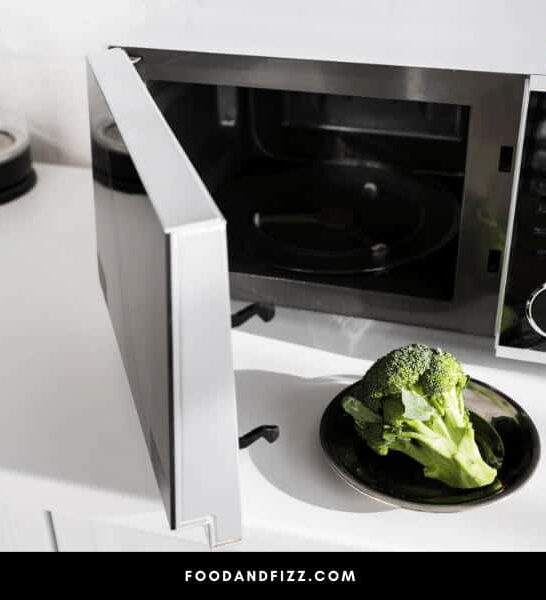It’s easy to heat up food in the microwave, but it also has the potential to be dangerous. Certain materials aren’t designed to be exposed to high temperatures.
While it’s always best to use a dish that you know is microwavable, accidents can and do happen. If you microwave a material that’s not microwavable, what happens next?
What Happens If You Microwave A Non Microwavable Plate?
The risks of heating a non-microwave safe plate in the microwave will vary based on the material of the dish. If you microwave a non microwavable plate such as a metal dish it can catch on fire, making metal especially dangerous. With plastic and ceramic dishes, chemicals from the dish could seep into your food.
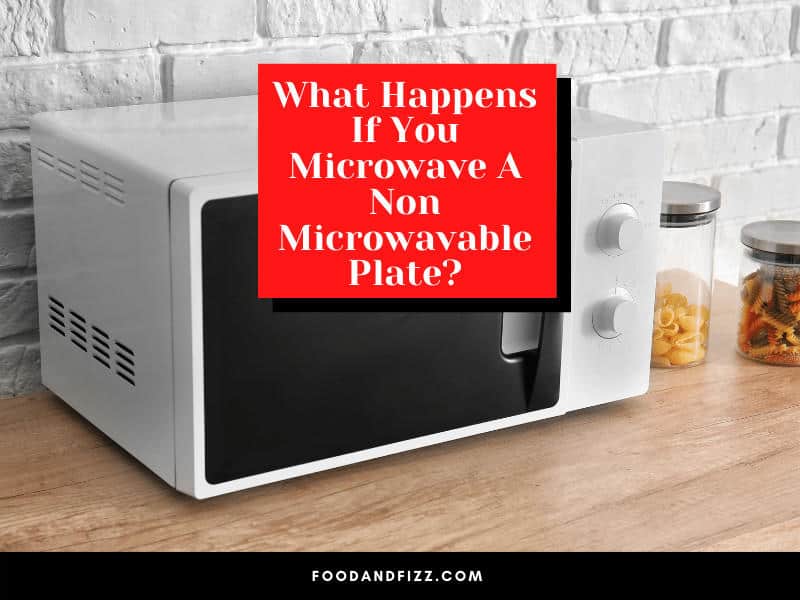
In addition to putting yourself at risk, microwaving a non-microwave-safe plate could damage the dish itself. Dishes that aren’t designed to be microwaved can crack or even melt, making a huge mess.
That’s why it’s best to stick to using microwavable dishes. When you know what can and can’t be microwaved, you can protect your health and avoid headaches.
What Should I Do If I Used a Non-Microwavable Plate?
It’s easy to accidentally put a plate that’s not microwave-safe in the microwave. When you’re cooking something in a hurry, you might not think to check to see if the dishware you’re using is microwavable.
If you catch the problem early on, you should stop the microwave and transfer the dish to another plate. However, if you don’t notice the issue until after your food has finished eating, you may need to throw your food away.
While it can be frustrating to throw food away, many dishes that aren’t microwavable can leach chemicals into your food. This is a common problem for certain types of plastics, like melamine.
With that said, if you’ve eaten food that was heated on a non-microwavable plate, you shouldn’t panic. Although some dishes can release toxic chemicals into your food when microwaved, the total amount of chemicals released is very small.
Dishes will release more chemicals when they’re microwaved repeatedly, which is why it’s best to invest in plates that you know are microwave-safe. That way, you can make sure you use safe dishes every time.
What Materials Are Safe to Use In the Microwave?
If you’re not sure if a plate is microwave safe, check to see what the dish is made of. There are a number of materials that are usually safe to microwave.
Glass
Most glass plates can safely be put in the microwave. However, if a dish is made from very thin glass, it could potentially crack or shatter at high temperatures.

Ceramics
The majority of ceramic plates are microwave safe. However, if a dish is glazed, there’s a chance that the chemicals from the glaze could wind up in your food.
Stoneware
Stoneware is heat-resistant and can usually be microwaved with no issues. Some glazes and paints have the potential to cause issues in the microwave.
Paper
Paper plates are safe to use in the microwave, as are paper towels. With that said, if a disposable paper plate has a plastic coating, it may not be microwavable.
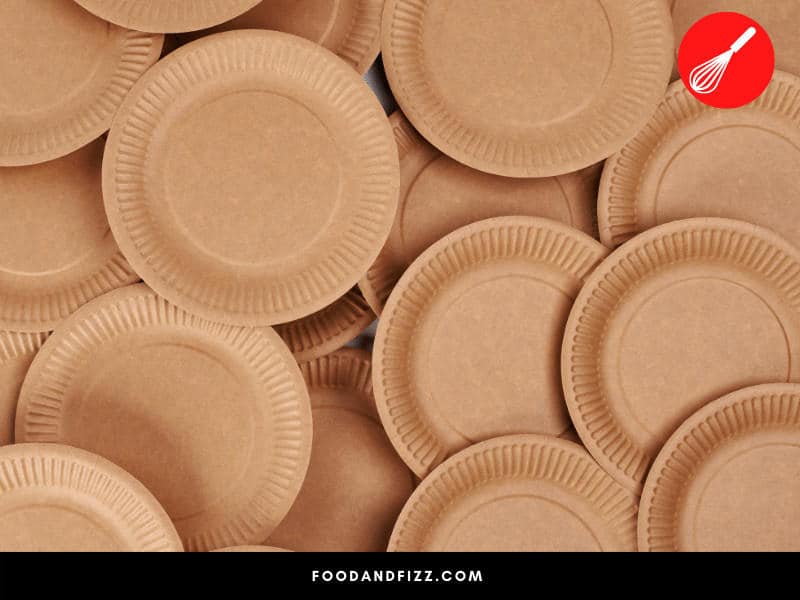
Plastic
Plastic plates can be put in the microwave as long as they’re labeled as microwave safe. Single-use plastic containers should not be microwaved.
What Materials Are Unsafe to Use In the Microwave?
While not all dishes are designed to be used in the microwave, some materials are especially risky. Make sure you keep these materials away from your microwave.
Metal
Metal produces sparks when it’s microwaved, which has the potential to start a fire. If you accidentally place metal utensils in the microwave, you should stop the microwave immediately and remove the utensils once they’ve had the chance to cool.
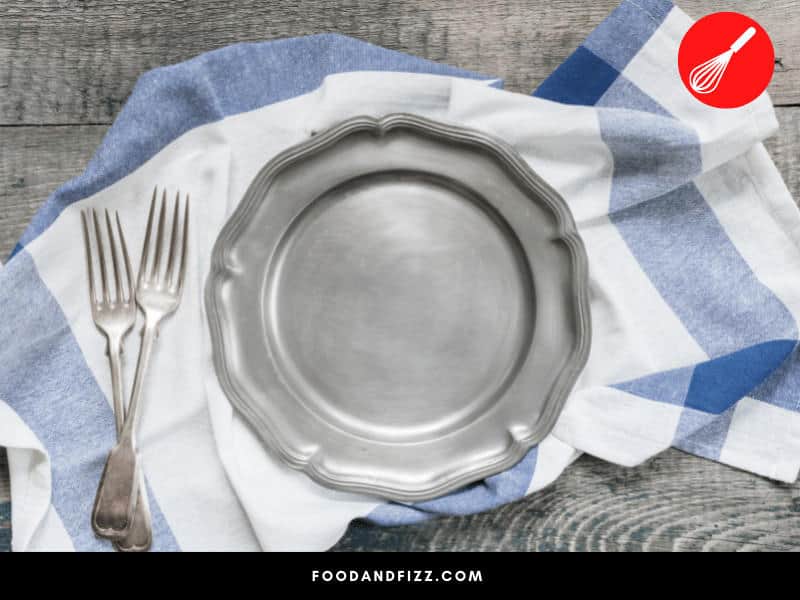
Brown Paper Bags
Most paper products can safely be microwaved, but brown paper bags are an exception. Paper products that are made from recycled paper can also be dangerous.
Melamine
Melamine is a type of hard plastic that’s frequently used to make dishware. When heated, melamine becomes very hot, and plates may potentially crack.
Cardboard
If you want to reheat food in a cardboard container, like a takeaway box, it should be transferred to a microwave-safe plate first. Cardboard often contains wax and glues, and those chemicals can wind up in your food when you use the microwave.
How Can You Tell If a Plate Is Microwave Safe?
If you’re not sure if a plate is microwavable, it’s best to proceed with caution. Thankfully, there are a few ways to see if a dish is microwave-safe.
1. Check the Bottom of the Dish
Plates and dishware that are microwavable often have a marking on the bottom of the dish. Examine your plate and look for a symbol with wavy lines.
Some microwavable dishes have a triangle symbol with a number in the center. You may also see a label that simply says ‘microwave-safe.’
2. Do a Safety Test
If there’s not a marking on your plate, you can run a safety test to see it’s okay to use when microwaving food. To run the test, place the dish in the microwave along with a microwave-safe cup filled with water.
Run the microwave on high for one minute. When the minute is up, check the temperature of the plate.
If the plate is cool or slightly warm, it’s safe to use in the microwave. However, if the place is very hot, it’s not a microwave safe dish.
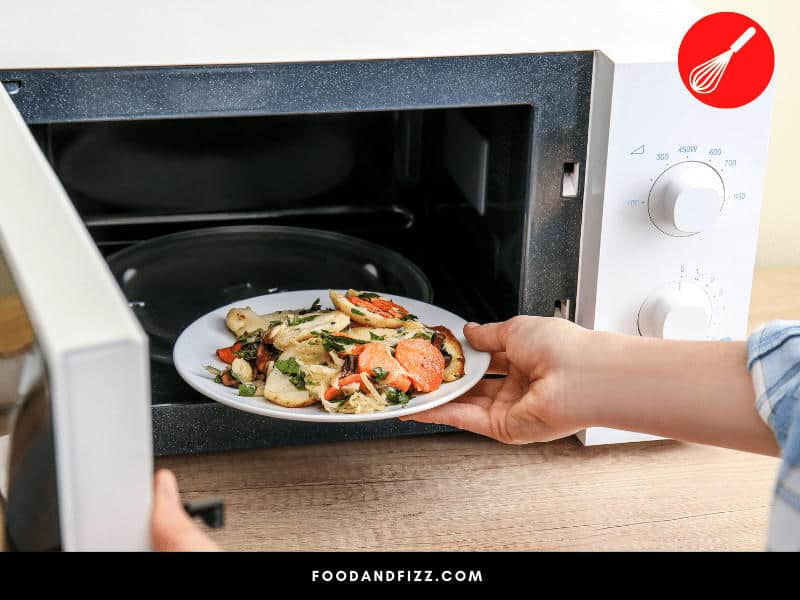
What to Watch Out For
Even if a dish is made from a microwave-safe material, it could potentially break in the microwave if it’s cracked, chipped, or scratched. It’s best to replace old dishes with new plates that are specifically designated as microwave safe.
Glass and ceramic plates will usually be your safest options as long as they don’t have glazing or metal detailing. Plastic dishes can also be a good choice as long as they’re marked as microwave safe.
In addition to using the right types of dishes, it’s best to use safe practices whenever you’re microwaving food. Spread food across the plate so that heat can be distributed safely and cover your food with a safe material, like paper towel.
It’s smart to check on your food partway through the cooking process to make sure it’s heating properly. You may want to stir your food when you check it to make sure your food is heated to a safe temperature.
Conclusion to What Happens if You Microwave A Non-Microwavable Plate?
Microwaves are a quick and easy way to heat food, but they have the potential to be dangerous. Try to avoid microwaving non-microwavable plates and use microwave-safe dishware instead.
Frequently Asked Questions On What Happens if You Microwave A Non-Microwavable Plate?
Can You Put an Oven-Safe Dish In the Microwave?
Some dishes are made from materials that are microwave and oven safe, such as ceramic or stoneware dishes. However, it’s always best to confirm a dish is microwavable before putting it in the microwave.
Does Heat-Resistant Mean Microwave Safe?
The majority of plates that are heat-resistant are safe to use in the microwave. Watch out for dishes with decorative details that could potentially cause issues when microwaved.

